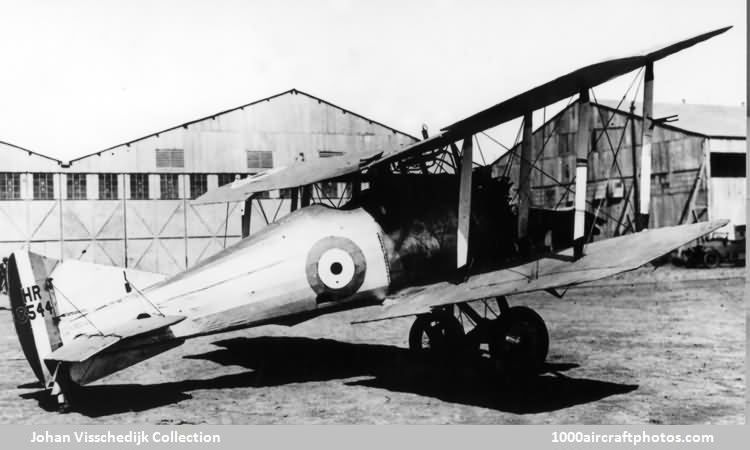11/30/2009. Remarks by Johan Visschedijk: "Harry P. Folland was chief designer with the Nieuport & General Aircraft Co. Ltd. when he designed the Nieuport Nighthawk. When in November 1920 Nieuport decided to close down, Gloucestershire Aircraft Company (G.A.C.) immediately acquired the Nighthawk design rights, a number of complete airframes, and a large number of spare parts. Folland agreed to act as a consultant engineer to oversee the further development of the Nighthawk, and joined G.A.C. as chief designer and engineer in the summer of 1921. The Mars VI single-seat fighter was Folland's fifth variant of his basic design and Nieuport-built Nighthawks were selected for conversion.
The first, s/n H8534, was modified to embody some metal fuselage components as required by Air Ministry specification 35/22. Still fitted with the original 325 hp Armstrong Siddeley Jaguar II fourteen-cylinder air-cooled radial engine it was delivered to the Aeroplane Experimental Establishment at Martlesham on May 21, 1921, where it was tested for fifty hours between June 5 and August 19, and subsequently stored for eight months until a 325 hp Bristol Jupiter III nine-cylinder air-cooled radial engine was fitted. It was flown for another 36 hours before H8534 was eventually scrapped in July 1922.
The same month, July 14, the second Jaguar-fitted aircraft, s/n H8544, was flown at RAE Farnborough, and from September 25, it was joint for comparative trials by five more aircraft, s/n J2405, J2416, J6925, J6926 and J6927, each powered by a Jupiter III or a 400 hp Jupiter IV engine. On February 7, 1923, J6925 was transferred to Martlesham where it was tested as the Experimental Metal Nighthawk. Thereafter it was shipped to the Middle East for Service trials in high temperature conditions, joined by H8544 and J6926. Eventually the Mars VI did not enter operational service with the RAF.
Of the 230 Nieuport Nighthawks originally ordered, only 128 can be confirmed as being built, however, 16 were rebuilt as Mars VIs, and a further 18 were converted either to Mars VI or Mars X Nightjar standards. A further 25 Jaguar-powered Mars VIs were sold to the Greek AF in 1922, and remained in first line service as fighters until replaced by Polish PZL P.24s in 1938 when they were relegated to training duties."
